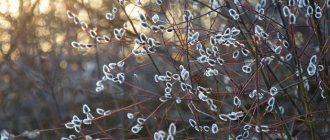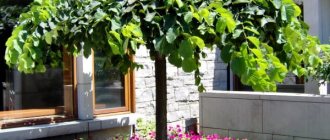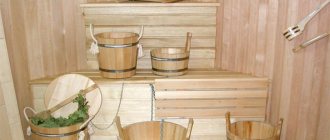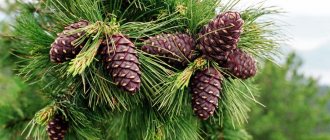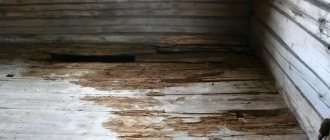Hazel. Properties of wood. Beneficial features. Hazel also has a second name - hazel. This is a genus of shrubs and trees of the Birch family. About 20 species of hazel are known. The most famous and used species is the common hazel.
Hazel grows in mixed forests, often adjacent to oak. Hazel appeared in Russia as a result of exchange for velvet and leather in the 1700s.
The height of the hazel tree reaches 7 meters in height. Hazel, in Russia, grows throughout the European part of Russia, in the Caucasus mountains and in the Crimea. The average trunk diameter is about 15 centimeters.
Hazel grows quite quickly. It has a powerful root system. With its roots, hazel perfectly strengthens the soil in ravines and slopes, thereby preventing washout and erosion of the soil. Hazel is a shade-tolerant species, but the tree is more fertile where there is more sunlight, fertile, moist, but not swampy soil.
Lumber
The tree trunk is straight, the tree reaches an age of up to 200 years.
Weaving furniture with your own hands is an opportunity to create a unique interior
Do-it-yourself wicker furniture, made in the best traditions of folk craftsmen, are exclusive interior items, distinguished by their reliability, originality, elegance, and ease of use.
Do-it-yourself decorative wooden fences photo? Vine has long been used to create exquisite and at the same time inexpensive household items. Once you master basic weaving techniques, you can easily make almost any furniture. In addition, vine is an environmentally friendly, durable and free raw material.
Before you start making wicker furniture yourself, you should carefully study the step-by-step instructions for beginners. They describe in detail the process of creating furniture from wicker, from the moment of harvesting the material to assembling the finished structure. Pay attention to the design, as well as the structure of the frame part, because this is what will guarantee the strength of the created product.
The unique appearance of the furniture is given by the weaving method. It can be single, openwork, combined. To make reliable and durable furniture, you need to decide on the method of fixing individual parts of the structure. Fastenings can be detachable or permanent.
In the first case, the assembly process is significantly simplified, in the second, the strength and reliability of the finished product increases.
Application of hazel
Nut shells are used to make linoleum, activated carbon, grinding stones, plywood and briquettes. The nut kernel contains 55-70% fat, 2-5% sucrose, 14-18% easily digestible proteins, as well as vitamins B and C, trace elements and iron salts. Can be eaten raw, dried and roasted. Nuts are widely used in the confectionery industry and in technical processing. Flour from such nuts can be stored for more than 2 years, while maintaining all the taste and nutritional value. Nut oil contains 65% oleic, 9% palmetic and 1% stearic acid. High content of vitamins. Hazelnut oil is very tasty, but similar to almond oil. When flavored, it is used in perfumery for the production of soap, cosmetics, and also in painting.
Used for various crafts: hoops, for upholstering fruit boxes, weaving furniture, baskets, for grape stamens. Coal from wood is suitable for making gunpowder. Sawdust is necessary for winemakers to clean cloudy and rough wines. The leaves and bark used in the leather industry contain more than 10% tannins.
all tree species
How to prepare material for weaving
Flexible branches of many plants can serve as material for weaving: bird cherry, willow, alder, hazel, raspberry, and nettle. Masters advise beginners to work with bird cherry blanks; such rods retain their original color and shine for a long time, are easy to dissect, cut, and are very elastic.
How the vine grows
The optimal place for collecting twigs will be the river bank, where many willow shoots sprout. It is best to prepare material for weaving in the fall (from October until the first frost) or in the spring. The vine should be cut with a sharp knife at an angle of 45°. The twigs collected during this period are easily cleaned of bark.
The prepared vine can be stored dry for a long time. It remains suitable for weaving for up to 2-3 years.
If you want to make furniture with openwork patterns, you will need thin rods, which must be cut in the spring. When choosing a vine, pay attention to the thickness of the core. If it is thick, then it is better to use rods for the frame of the product.
Also, when choosing blanks, you should pay attention to the width of the willow leaf: the narrower it is, the more flexible the vine will be.
Which is better: heated floors or radiators?
Warm floorBatteries
Ready material for weaving
When it is necessary to achieve a light shade of wood, the rods are subjected to additional heat treatment by boiling them. This can be done by lowering the workpieces into a large vat of boiling water. To achieve a light color of the vine, it must be boiled for 3 hours. To obtain darker shades, the rods are kept in boiling water for at least 4 hours.
Immediately after the end of the heat treatment, the rods should be cleared of bark, this will preserve the beautiful shade of natural wood. To do this, use a splinter or a rough glove.
But nuts are not simple...
As mentioned above, almost the entire plant is used for medicinal purposes, but for very different diseases. Let's start with the most delicious, with kernels.
As we have already mentioned, it is advisable to include nuts in the diet of people prone to sclerosis. In folk medicine, nuts are often used against urolithiasis, and nuts with honey are used for rheumatism, anemia and as a general tonic.
Nuts are used as a cough remedy as follows. Take 1-2 handfuls of peeled nuts, crush them in a mortar, mix with honey, diluted with an infusion of some antitussive plant, such as thyme or oregano, and take a dessert spoon every 30 minutes.
Burns are treated with oil mixed with egg white. It is a good remedy for strengthening hair. The oil is rubbed into the scalp in a similar way to castor oil. And if you add some essential oil that has a cosmetic effect, for example, orange, chamomile, rose, lavender or ylang-ylang, then the healing effect will increase. Sometimes it is taken against worms (roundworms). In Georgia, nuts are sometimes used as a carminative, and also to improve milk secretion in nursing women. In Azerbaijan, burnt dry hazelnuts are used to color eyebrows and eyelashes.
Shells can also be used. Walnut shell extract is considered a good remedy for prostate adenoma. Pour crushed shells from 1 kg of nuts into 2 liters of water and boil over low heat until 1 liter of broth remains, strain and add 1 kg of honey. Take this extract 30 ml 3 times a day.
Common hazel
How to make a wicker chair
Making a chair involves weaving the following elements: seat, back, sides, legs, drawers, additional elements (armrests). Willow twigs are perfect as a material for work. For the frame, you should prepare a vine with a diameter of 25-30 mm.
Thinner rods up to 10 mm thick will be used to braid the product.
Depending on the complexity of the design and the skills of the craftsman, making a chair takes up to 7 days.
On average you will need 25-30 strong long pieces. A special tool, a jig, will help you bend the rod and smooth out its defects. First, cut the material into the necessary elements.
To make a bent part, the soaked workpiece should be bent according to a template.
A chair intended for relaxation will consist of:
- lower bench;
- seats;
- backrests;
- armrests.
The frame should be made of strong rods. An armchair is an elegant and functional piece of furniture; armrests will not only make it more comfortable, but also give it additional strength.
The base of the structure frame is the lower bench, which is necessary for the reliability and stability of the chair. It consists of:
- covered leggings;
- load-bearing crosspiece;
- tricks;
- frames for seat support.
To make the seat, large, strong paired rods are chosen. They are attached to the frame rods and the cross rod of the seat. The back will consist of the upper part of the rear legs, the rods of the back part and horizontal elements.
During the manufacture of the chair frame, the legs are fixed to the frame and seat cross.
After this, the shoots are installed and the legs are tightened. Then comes the installation of the backrest and cross bars of the seat. To make armrests, pre-soaked blanks bent to the desired shape are used.
This element is attached to the subframes and seat frame using small nails. The upper ends of the armrest rods should be attached to the side supports.
After completing the installation of all the main parts of the frame, you can begin braiding the product with a thin vine. Particular attention should be paid to the joints to hide the fasteners. After installing the inlaid rods on the seat and back, the chair takes on a finished look and is ready for use.
The undeniable advantage of wicker furniture is its environmental friendliness, strength (can withstand up to 200 kg) and durability (such furniture lasts more than 20 years).
General information, varieties of hazel
Hazel (Corylus) is a multi-valued deciduous, shrub-woody plant. One of the most common shrubs in oak forests. He is familiar to many - it is he who ripens delicious nuts by autumn. Hazel fruits attract not only humans; some forest inhabitants feed on them - squirrels, bears, wood mice. Hazel can often be called hazelnut, and hybrids between its various southern forms are called hazelnuts.
This genus includes 20 botanical species that are found in Asia, Europe, and North America. Of these, 9 types of hazel are common in Russia: common, multi-leaved, Manchurian, short-tube, large-fruited, Pontic, Colchian, Imeretian and bear nut. The shrub does not spread beyond the Urals and is not found in the wild in Siberia and Central Asia.
Variegated, Manchurian, short-tube hazel, growing in our Far East, are of little economic importance.
Pontic, Imeretian, and Colchis hazels grow in Transcaucasia.
Large hazel, or Lombard nut (hazelnut), is the progenitor of large-fruited garden forms.
All of the above-mentioned types of hazel, with the exception of bear nut, are tree-like 5-8-meter shrubs with numerous branches.
Bear nut (Colyrus colurna) grows and turns into a large, strong tree with a trunk diameter of up to 90 cm and up to 25 m in height.
In power and beauty it rivals only beech. It lives up to 200 years, while other types of hazel have a rather short lifespan - 50-75 years. A bear nut at a hundred years of age produces about 20 kilograms of fruits - tasty, small, oily and thin-barked.
The wood is pinkish-red in color (which is why bear nut is also called Caucasian rosewood) and is characterized by high mechanical properties.
The wood of this tree, common in the Caucasus and southeast Russia, is valuable in the furniture industry, in the production of joinery and turning products and as a high-quality building material.
In forestry, the most important species is the common hazel, or hazel (Corylus avellana) .
This multi-branched shrub (it has 30-50 shoots) grows in coniferous-deciduous forests of the European part of Russia, reaches 5-8 m in height, the bark of the trunk is smooth, gray or gray-brown. The trunk is bent. Oval, unevenly serrated, large leaves have a dark green color. Hazel leaves are densely pubescent with short hairs on both the upper and lower sides; hairs also cover young hazel stems and leaf petioles. In autumn, the leaves acquire a beautiful lemon-yellow color with red tones. As leaves fall, they enrich the soil with nutrients.
The fruits are single-seeded nuts with a dense shell, surrounded by a leaf-like shell, ripen at the very end of summer or early autumn. In the middle zone, hazel blooms in March-April. It reproduces well by stump shoots, mature nuts, dividing bushes, and root suckers. At 5-6 years old, young bushes begin to bear fruit. Hazel needs good lighting, although it is shade-tolerant - it develops well under the canopy of other trees in the forest. With strong shading and lack of light, the leaves of the bush take a horizontal position and are arranged so as not to obscure each other. In the spaces between large leaves, smaller leaves are placed, forming a so-called leaf mosaic - a device for better capturing light. Hazel is sometimes mistaken for gray alder, because... their leaf shapes are very similar. However, alder leaves are hairless and bare.
In cleared areas it grows very luxuriantly, posing a threat to the regeneration of the main species, such as ash and oak.
To content >>>
How to weave a rocking chair from willow vine
A rocking chair is increasingly becoming an integral attribute of every country house. Among the wide range of similar designs, products made from wicker are popular, as they fit wonderfully into the interior of the dacha and provide the owners with a comfortable rest in nature. This chair is easy to make yourself at home.
Pros and cons of wicker structures
Rocking chairs made of wicker have a number of advantages. The advantages of such products include:
- availability of material to perform the work;
- ability to withstand significant weight;
- small weight;
- Possibility of location in any convenient place;
- environmental cleanliness;
- unique design thanks to openwork weaving;
- ease of maintenance and operation.
A chair made from wicker also has some disadvantages. Do-it-yourself corrugated fence video step by step? For example, when exposed to precipitation and direct sunlight for a long time, the rocking chairs darken, crack, and lose their shape.
Walnut wood and its main types
The most well-known walnut varieties in carpentry are walnut and black walnut. Walnut is lighter in color than black walnut. It has high strength. Which makes it an ideal material for the manufacture of furniture parts that are subject to constant mechanical stress. For example, the famous firearms manufacturers Smith and Wesson used walnut wood to make rifles, shotguns and stocks.
Preparation of material
Several types of trees are used to weave furniture items. More often it is willow (due to its wide distribution). In addition to it, hazel, broom, alder and bird cherry are used.
As an option, a vine from grape or raspberry bushes is suitable.
The best time to collect raw materials begins with the arrival of cold weather and ends with the onset of a thaw. At this time, the sap inside the tree does not move and the material is easily processed. Harvested vines are kept outdoors in a vertical position for 3-5 days.
The material is sorted based on the purpose of the rods. To make the frame of the structure, a vine with a diameter of up to 4 cm is used, for weaving - 0.5-1 cm.
Hazel blossom
A blooming hazelnut is a sign of proper growth. A monoecious plant is pollinated by wind. Male inflorescences are catkins, and female inflorescences are kidney-shaped from a pistil with a pericarp and slightly protruding stigmas. They catch pollen.
Hazel trees bloom from April, but it all depends on weather conditions. A stable temperature of up to +12 degrees for several days is considered the most favorable. The fruits begin to set when the first leaves appear.
Raw material processing
Weaving from wicker is possible after the harvested material has undergone certain preparation. The order is as follows:
- Water is boiled in a metal container.
- The prepared rods are lowered into the vat and boiled for 10-12 hours.
- The bark is removed from stems treated in hot water.
- A thin vine is cut with a splitter into several strips (shreds). A cut is made at one end of the rod into which the stake is inserted. Using this tool, the vine is split into 3-4 strips.
- The tires are pulled through a press, resulting in them being the same size and appearance.
- Thick welded rods are installed in pre-prepared templates, which are made in full size in accordance with the drawing.
- Making a template is easy. A frame pattern is applied to a wood surface (preferably chipboard). In accordance with the diagram, wooden cylinders or pipes are fixed to the base. The frame rods will be bent around these fastenings.
- The vines curved in the template are connected to each other for a while using bars or strong thread.
- The frame with ties and thin wicker bars are placed in a drying chamber.
The complete drying period lasts about 72 hours. After this, they begin to assemble the rocking chair.
What does hazel help with and how is it beneficial for the human body?
When used correctly, the fruits, bark and leaves of common hazel have a beneficial effect on the human body. Namely:
- promote expectoration when coughing and remove phlegm;
- improve blood circulation and help with varicose veins;
- stimulate digestion and prevent the development of constipation;
- have a beneficial effect on the condition of the kidneys and urinary tract;
- have a wound healing and regenerating effect;
- have mild analgesic properties;
- cleanse the epidermis of acne and blackheads;
- help with skin irritations and insect bites;
- protect against the development of anemia and maintain healthy body weight;
- strengthen the immune system and speed up recovery from colds.
You can use ordinary hazel to remove waste and toxins from the body.
Products based on common hazel improve memory and concentration
What are the benefits of hazelnuts?
Hazelnuts are useful for gaining weight if you have a lack of muscle mass and for improving brain function. The fruits of common hazel help get rid of flatulence, help dissolve stones in the kidneys and urinary tract, and protect the liver from ailments.
Healing properties of hazel shells
The shell of an ordinary hazelnut is often used in the preparation of decoctions and tinctures. Products based on it:
- reduce blood pressure;
- improve the condition of migraines and dizziness;
- stop bleeding;
- help with hemorrhoids and varicose veins;
- alleviate the condition of joint ailments;
- cleanse the skin and promote its healing when used externally.
It is recommended to use the medicinal properties of hazel nut wrapper and shell for diarrhea; the powder from the raw material has an astringent effect.
Medicinal properties of hazel leaves
Hazel leaves contain large amounts of flavonoids, essential oils and antioxidants. They have good anti-inflammatory and antiseptic properties, help with diseases of the stomach and intestines, as well as with wounds and cuts. Decoctions and infusions of the leaves can be used to treat anemia, for rinsing with sore throat and stomatitis, and to strengthen the immune system.
We recommend reading: Properties and uses of monarda essential oil
Medicinal properties of hazel bark
The bark of common hazel is rich in tannins and has a pronounced healing effect. Products based on it are used for inflammation and bleeding, to strengthen the walls of blood vessels and in the treatment of varicose veins and thrombophlebitis.
Decoctions and infusions of hazel bark have diuretic properties. You can take them if you are prone to swelling and if there is fine sand in the kidneys.
Properties of hazel extract
Hazel extract, a homeopathic remedy with anti-inflammatory and soothing properties, is available for purchase in pharmacies. Indications for use of the drug include:
- skin diseases - dermatitis and eczema;
- periodontal disease and sore throat;
- diarrhea;
- hemorrhoids and varicose veins;
- furunculosis;
- irritable bowel syndrome;
- tooth and ear pain;
- stomach ulcer.
The extract is taken orally in a small spoon once a day on an empty stomach or applied to the skin, first diluted with water in a ratio of 1:5.
What are the benefits of hazel for men?
Common hazel increases the overall endurance of the body and is beneficial for men primarily during heavy physical work. In addition, hazel can be used to prevent strokes and heart attacks; products based on the plant strengthen blood vessels and the heart. Hazel prevents the development of oncological processes in the reproductive sphere, and also increases potency and increases the ability to conceive.
The anti-inflammatory properties of hazel help cope with prostatitis and adenoma
Advice! Eating hazelnuts is useful for gaining muscle mass during sports.
Creating a design
A wicker chair should be durable, the basis of which will be proper manufacturing. The procedure for forming the skeleton of the structure is as follows:
- Assembly begins with a wooden base. Do-it-yourself wicker fence from boards photo? The frame often looks like a single element that includes the seat and back of the rocking chair. The support legs are attached to it with self-tapping screws.
- To strengthen the structure, cross strips are mounted between the front and rear legs.
- Armrests and other elements are installed on the chair body using self-tapping screws, according to the drawing.
- After the frame components are securely fixed, the temporary fastening is removed.
Botanical description
The plant is distinguished by a variety of species. It may look like a tree or grass forming an understory, but most hazels are deciduous shrubs with a crown of rounded, rich green leaves. In the wild, it has many stems growing directly from the rhizome. Hazel rarely grows more than three to five meters.
Hazel
Fruiting depends on the method of reproduction. If this is vegetative production, nucleoli appear already in the fourth year, and in seed production - only in the sixth or seventh year. A characteristic feature is that the leaf plates are rough to the touch, oval with a sharp tip and jagged edges.
Braid construction
This fascinating process begins when the frame is completely assembled. The braiding procedure includes the following steps:
- Gives softness to tires. To do this, use a cylindrical shape, over which they throw the vine, pull it a little and pull it several times in different directions.
- Coating the braid with two-component glue or PVA. After this, the body of the chair is woven.
- Winding the frame in three rods. This will strengthen the fastening of the structure and also facilitate the process of internal weaving, which is performed in different ways: single, openwork or combined.
- Braiding the body using several techniques: braid, checkerboard, simple linear method, etc.
When the braid is ready, support skis and supports are attached.
Installation of runners
To increase the service life of the rocking chair, it is recommended to install runners that are wear-resistant. The procedure is as follows:
- Turn the structure upside down.
- Heat the skis with a hairdryer, place them on the runners one by one and wrap them along the entire length with cotton tape.
- After the pads have cooled and taken the desired shape, glue them to the runners, first removing the fabric. For high-quality fastening, secure the ends of the planks with nails.
- Allow the glue to harden for 48 hours, after which remove the nails and replace them with self-tapping screws. Cover the installation areas with a mixture of glue and sawdust.
It is recommended to install fasteners only on the edges of the runners. This is due to the fact that during operation the linings wear out, the heads of the hardware will begin to stick out and spoil the floor covering.
Final Steps
The finished structure is treated with an antifungal agent and liquid that will prevent the appearance of wood pests.
To increase moisture resistance, special varnishes with water-repellent characteristics are used. Before coating with a protective agent, the product is given the required shade. To do this, use stain or paint.
The finished rocking chair will bring beauty, comfort to your home and will become a favorite relaxation spot for every family member.
How to treat the surface → Room decoration → How to choose the right paint → Surface treatment technologies → Leveling and finishing the walls → Selecting and applying a primer → Removal from the surface → Stretch ceilings and technologies → Reviews and testimonials

